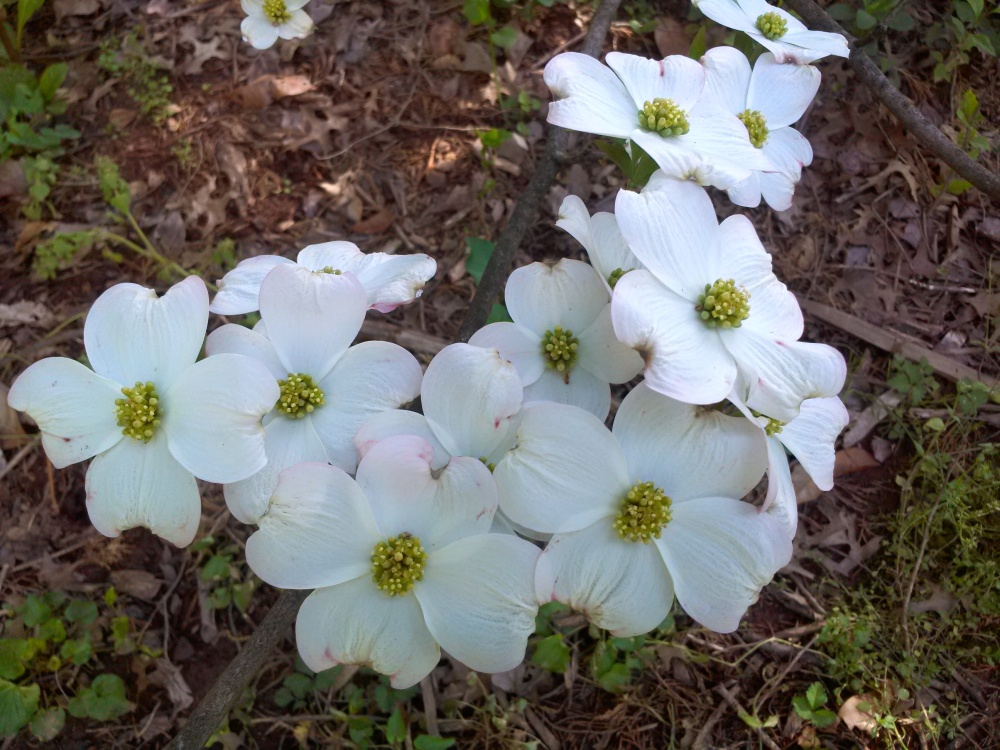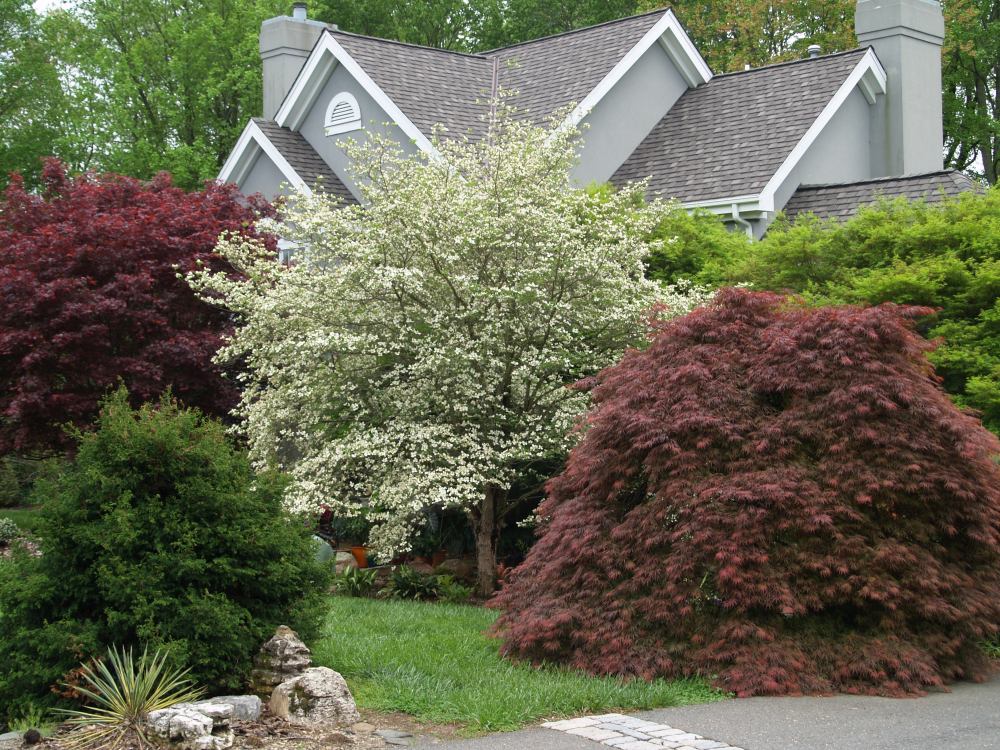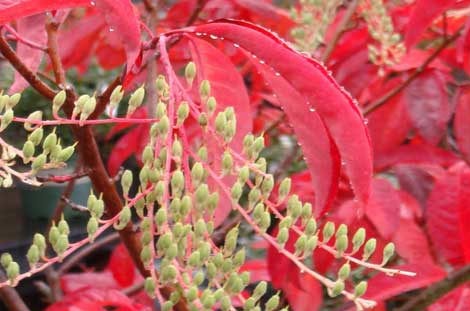Leaves of the garden’s sourwood (Oxydendrum arboreum, below) are now gloriously colored, and with arching seedpods it is quite a marvelous sight. Unfortunately, I must imagine this beauty since the lowest branches are at least thirty feet off the ground.
Why are there no lower branches, you ask? Simply, the sourwood is sandwiched between a goldenrain tree and the neighbor’s willow oak, and on the one side where the glimpse of foliage far over head is possible, there are no lower branches because a pair of hornbeams once blocked the sunlight.

There are stories behind many of the garden’s trees. I recall first seeing the Bigleaf magnolia (Magnolia macrophylla, above) in a weedy field of small dogwoods. While I quizzed the grower and diverted his attention inquiring about the magnolia, he ran over ten or fifteen tiny dogwoods that were hidden in the tall weeds. Perturbed, he backed into a wooden fence, but demonstrating his good humor and generosity, he promised to deliver the magnolia in the next dormant season. And, here it is thirty years later.
I don’t remember the sourwood’s origin. But, I do recall that at the time (thirty years ago) tree growers too often harvested sourwoods from along mountain roadsides and from parkland, so I was certain to purchase a tree that was nursery grown. Sourwoods are slow growing in the nursery, which easily explains why this splendid tree is not more readily available. And then I plant it at the extreme edge of the garden, barely visible behind other trees. What was I thinking?

The white flowering dogwood (Cornus florida ‘Cherokee Princess’, above and below) in the front garden came from the same Tennessee gentleman, almost certainly not one of the trees with tire marks up its side. This tree replaced a Japanese maple (below) with pendulous branching that was planted too close to the front walk. The maple was transplanted indelicately when I tired of digging, with a chain wrapped around the exposed roots, which were then jerked free and into the new hole with the chain hooked to the back end of a car. The tree did not seem to suffer at all, and years later the Japanese maple now grows over the edge of the driveway.

The dogwood, planted a bit further from the walk, has been cursed by one malady after another, as is common for dogwoods in their warm and humid native habitat. While not unusual, the dogwood is regularly plagued by anthracnose and cankers. But despite yearly infections, the tree refuses to give up. I suppose it will outlast me.

I’ve been growing a variety of trees on my small yard for about 50 years now, and looking back, I have to say that my favorite tree is the sourwood – no messy seeds, the leaves are no fall problem, it blooms in early summer, the tree has a nice shape, and in the fall the red foliage is simply gorgeous, complemented by its white seedpods. I’m always mistified why more people don’t plant more of them here in New Hampshire. Other favorite trees of mine are the dogwood, red horse chestnut, and seven sons tree.
While sourwood is slow, so expensive to grow, it is not more widely available due to lack of demand. It is unfortunate that so many choose red maples instead.
Those are what pass for tall trees there?! no redwoods?
Sourwood seems to be a name that applies to a few species. We tried growing that one years ago, but there was no market for them. No one here is familiar with them, or willing to try them.
Our tulip poplars might climb a bit over a hundred feet, but nothing like west coast firs and redwoods. But we have autumn leaf color, or we did, since most leaves are gone until spring.
Tulip poplars happen to be one of the Eastern trees that does well here. It colors nicely even with minor chill, although yellow is the color that we have plenty of. Unfortunately, they got scale very badly through the 1990s, so have a bad reputation now. When I am in Los Angeles, I see one on the next block over. It is as happy there as others are here. I would have been hesitant to plant it where winters are so bland. It must have come from a nursery farther inland.